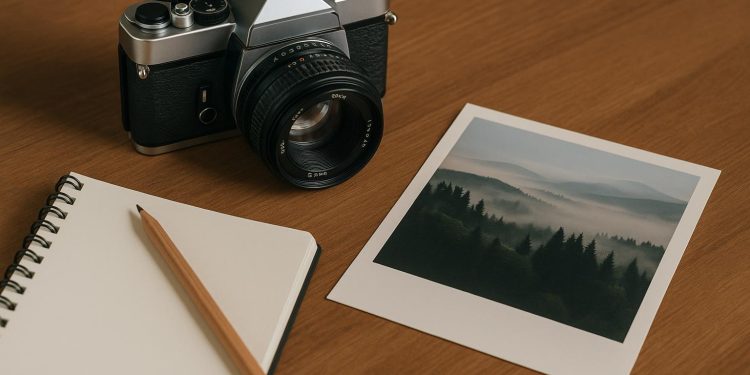As a seasoned creative leader, Alberta Testanero has shaped brand, digital, and experiential programs for luxury and lifestyle houses, including Tiffany & Co., Coach, and Bergdorf Goodman. With a BFA from FIT and more than two decades guiding visual systems, she blends art direction with disciplined process to translate strategy into clear design. Her New York City consultancy, founded in 2015, helps emerging and established brands align identity across platforms. This background informs how a designer learns to see, from proportion to hierarchy, and why photographic practice strengthens visual judgment in everyday work.
How Photography Sharpens a Designer’s Eye
Photography is more than a way to capture images — it’s a practice that sharpens the habits behind great visual judgment. Every frame asks for choices about focus, balance, and composition — the same instincts that define how design reads on a page, in a campaign, or across a brand identity.
Framing a shot teaches proportion and the relationship between elements. Photographers guide the viewer’s eye through spacing and placement — lessons that translate directly to typography, layout, and visual hierarchy. Composition, at its core, is about how everything fits together so the viewer’s eye moves effortlessly through the image. Developing this awareness strengthens a designer’s intuition for symmetry, tension, and visual weight — all essentials for clear, intentional design.
Lighting is another shared language between photography and design. A single directional light can add depth and emotion; even lighting can flatten energy. In design, we use tonal contrast and color balance in the same way — to shape emotion, highlight hierarchy, and ensure readability. Light teaches us how to direct attention, both in imagery and in communication.
Editing is where photography and design meet in purpose. A photographer crops to clarify; a designer simplifies to focus. Both rely on restraint — removing what’s unnecessary so the message feels strong and deliberate. Practicing selective focus becomes a creative mindset: less noise, more meaning.
Timing also connects these crafts. Photographers wait for the right light or fleeting expression, while designers pause to refine before releasing. Observation before action leads to sharper results, whether it’s capturing a shot or finalizing a campaign. It’s a discipline that improves not just creative output, but the entire feedback and review process.
The best part is how accessible this practice has become. With phone cameras, anyone — designers, art directors, or curious observers — can experiment with perspective in daily life. Capturing reflections, textures, or fleeting light trains the eye to notice nuance. Growth comes from repetition, not gear. Over time, this habit builds visual literacy and creative intuition.
Photography also develops analytical thinking. Each image requires assessing light, distance, and framing — then making adjustments to achieve balance. That mirrors how creative professionals solve design challenges or shape brand storytelling. Testing, refining, and learning through visual feedback turns observation into a structured creative process.
Over time, consistent image-making builds precision — that subtle awareness that separates good work from great. Photographers spot uneven lighting; designers catch misaligned type or awkward spacing. When those instincts sharpen, collaboration becomes smoother and feedback more productive.
Photographic thinking also enhances brand storytelling. When teams apply this visual awareness to campaigns, they create consistency without rigidity. The result is cohesive design across packaging, websites, and social platforms — building trust through unified tone and texture. The same observational mindset that guides a lens can strengthen an entire visual identity.
In creative teams, mentorship carries these habits forward. Many senior designers and art directors encourage juniors to shoot daily — not for the perfect image, but to practice seeing. Reviewing those images together builds confidence in critique and intent in visual choices. Over time, this shared observation becomes a foundation for creative culture.
Ultimately, photography keeps creative work grounded in observation, timing, and restraint — qualities that make design adaptable as media evolve. Designers who practice seeing through a lens bring a steadiness to every visual hierarchy they build. That ability to see with intent — refined through photography — is what keeps creative direction thoughtful, clear, and enduring.
About Alberta Testanero
Alberta Testanero is a New York City based Creative Director with more than twenty years in brand strategy, visual identity, and digital design. She has collaborated with Tiffany & Co., Coach, Bergdorf Goodman, Ann Taylor, Kate Spade, and Jo Malone London. After earning a BFA from the Fashion Institute of Technology, she founded a consultancy in 2015 that partners with startups and global brands. She also supports animal rescue and education initiatives in East Africa.







